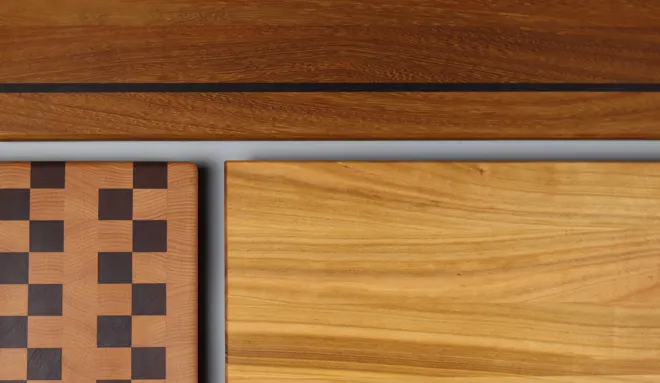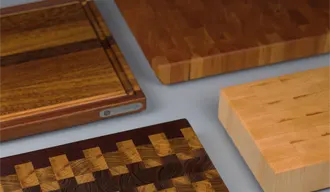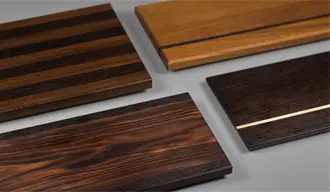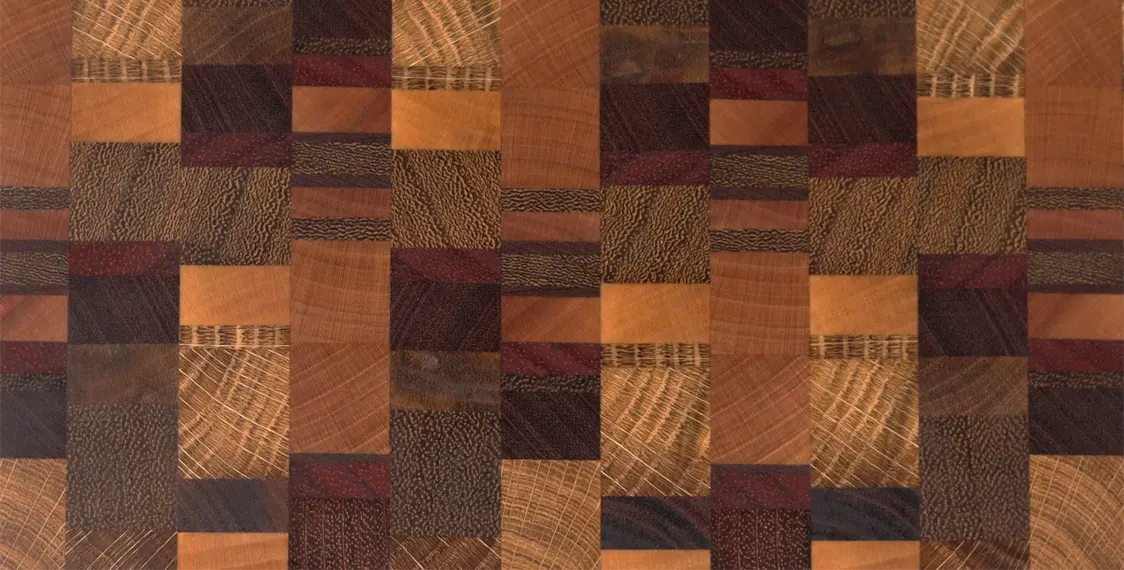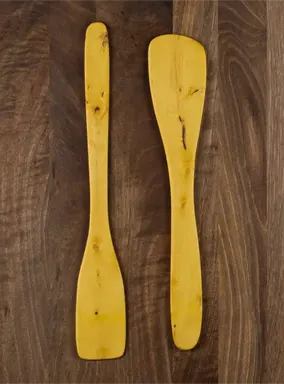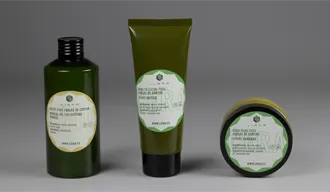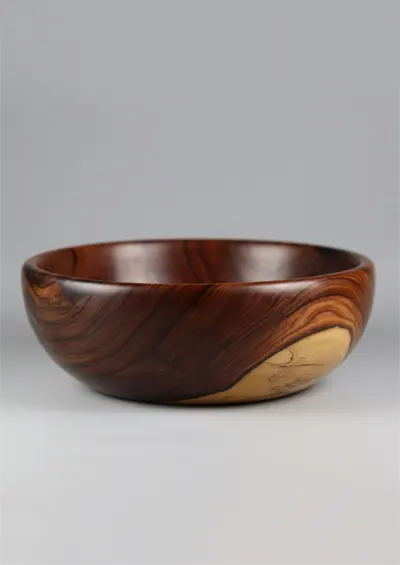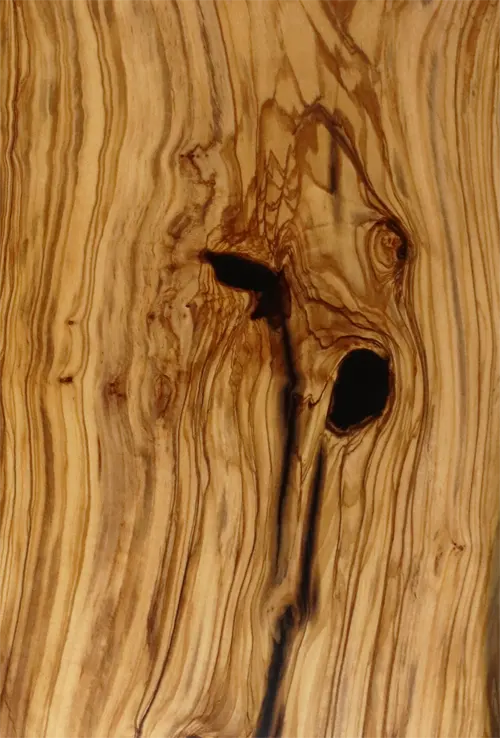Kotibé Wood: Uses and Characteristics
Kotibé wood, from West Africa, is a popular choice for cabinetmaking because of its balance of durability, beauty and ease of workability.
Known for its reddish brown color and its resistance, kotibe is a wood mainly used for the manufacture or ornamentation of small objects.
The following are their characteristics and most common uses.
What is Kotibe Wood?
Kotibé is extracted from the tree Nesogordonia papaverifera which grows in the tropical regions of Africa. Its color varies from light brown to reddish brown, darkening with time.
It has a straight or slightly interlocked grain, fine grain and a delicate texture. Its combination of warm aesthetics and physical properties makes it a versatile and durable wood.
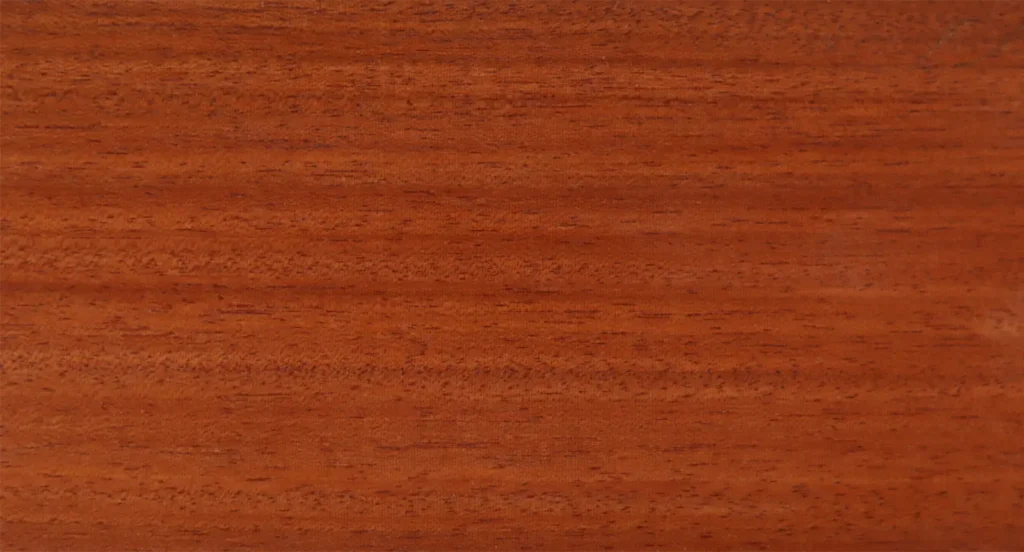
Characteristics of Kotibe Wood
Hardness and Density
Kotibe has a moderate hardness, with a density of between 620 and 700 kg/m³, which gives it good strength without being excessively heavy. This makes it suitable for decorative projects as well as for objects exposed to scratches or small knocks, such as a breakfast tray.
Stability and Durability
This wood is very stable and durable, with good resistance to decay and wear due to its high content of natural oils. It can be used both indoors and outdoors if properly treated.
Aesthetics
The warm color of kotibe, along with its soft grain and oily feel, makes it aesthetically appealing for projects requiring fine finishes. With proper treatment, it maintains its luster and elegance for long periods of time.
Ease of Work
Kotibé is a relatively easy wood to work. It can be cut, planed, sanded and polished without too much hassle, and responds well to varnishes, oils and glues, which allows it to highlight its natural tones and protect it from wear and tear.
Table of technical characteristics of kotibé wood
| Property | Value |
|---|---|
| Scientific name | Nesogordonia papaverifera R. Capuron |
| Common name | Kotibé, Danta |
| Origin | Central Africa (mainly Gabon and Cameroon) |
| Sapwood | Pink |
| Heartwood | Pale brown to purplish brown turning red in the light |
| Fiber | Straight, often slightly interlaced |
| Grain | Fine to medium |
| Density (12% humidity) | 750 kg/m³ |
| Hardness (Chalais-Meudon) | 5.6 (semi-hard wood) |
| Dimensional stability | Volumetric shrinkage coefficient: 0.48% (nerve wood) |
| Flexural strength | 1.350 kg/cm² |
| Compressive strength | 700 kg/cm² |
| Modulus of elasticity | 115.000 kg/cm² |
| Impregnability | Sapwood: moderately impregnable; Heartwood: slightly to non-impregnable |
| Natural durability | Media against fungi and insects |
| Tendency to curve | Pequeña |
| Workability | Sawing: no problem; Planing: difficult due to its hardness; Gluing: no problem; Nailing and screwing: requires pre-drilling; Finishing: no difficulty |
| Common uses | Interior and exterior carpentry, decorative veneers, quality furniture, moldings, friezes, parquet |
Uses of Kotibé Wood
Cutting Boards of kotibe wood
Kotibé wood is not a wood commonly used for cutting boards. Its high price and unstable availability mean that it is used for small details in high-end cutting boards with complex designs.
Its low porosity and resistance make it ideal to accompany woods such as hard maple, wenge, oak or iroko.
Small Indoor Furniture
Due to its strength and intense warm colors, kotibe is ideal for making small objects such as boxes, candle holders, trays or centerpieces.
Flooring and Coatings
Although not often, kotibe is used for interior flooring where a wear-resistant surface is needed. Its warm color also makes it an attractive aesthetic choice for cladding and stairs.
General Carpentry
In areas where kotibe is abundant, it is frequently used in carpentry and joinery projects, including doors, windows and moldings, where both strength and aesthetics are required.
Advantages and Considerations for Kotibe Wood
Advantages of Kotibe wood in cutting boards
- Attractive Aesthetics: The reddish color and fine grain of kotibe make it a highly valued choice for furniture and decorative finishes.
- Ease of Work: Despite being a moderately hard wood, it is easy to work with, making it ideal for carpentry and joinery projects.
- Durability: Kotibe is resistant to wear and moisture, making it a durable choice for flooring, furniture and cutting boards.
Considerations on the use of Kotibé wood:
- Limited availability: Kotibé wood is not abundant in domestic and European markets, which can increase its price and limit its accessibility.
- Darkening over Time: Like other reddish-toned tropical woods, kotibe tends to darken over time.
Conclusion
Kotibe wood is an excellent choice for adding detail to luxury cutting boards. Although its availability may be limited and its cost high, its long-term performance and attractive appearance justify the investment in high-quality projects.
Visit our other kitchen accessories section.
Frequently asked questions about Kotibé wood
What is kotibé wood and where does it come from?
Kotibé wood, also known as tapir, comes from the Nesogordonia papaverifera tree, native to Central Africa, especially countries like Gabon and Cameroon.
What are the visual characteristics of kotibé wood?
It has a pinkish sapwood and a heartwood that varies from pale brown to purplish brown, turning red upon exposure to light. Its grain is straight, occasionally interlaced, and its grain is fine to medium.
What is the density and hardness of kotibé wood?
It has a density of approximately 750 kg/m³ at 12% moisture content, classifying it as a heavy wood. Its hardness according to the Chaláis-Meudon scale is 5.6, making it semi-hard.
How does kotibé wood behave in humid conditions?
It is a nerve-like wood with moderate dimensional stability. Its volumetric shrinkage coefficient is 0.48%, indicating a moderate tendency to warp with changes in humidity.
Is kotibé wood resistant to fungi and insects?
It has a medium natural durability against fungi and insects, so it is recommended to treat it if it is going to be used in environments prone to these agents.
What are common applications for kotibé wood?
It is used in interior and exterior carpentry, manufacturing quality furniture, decorative veneers, moldings, friezes and parquet.
Is kotibé wood easy to work with?
Sawing presents no significant problems, but planing can be difficult due to its hardness. Gluing presents no difficulties, while nailing and screwing require pre-drilling.
How does light affect the color of kotibé wood?
The heartwood of kotibé tends to darken, turning a deeper shade of red with exposure to light.
Can kotibé wood be easily impregnated with protective treatments?
The sapwood is moderately impregnable, while the heartwood is slightly to non-impregnable, which may limit the effectiveness of certain protective treatments on the heartwood.
What special care does kotibé wood require?
Due to its tendency to warp with changes in humidity and its limited resistance to fungi and insects, it is advisable to store it under controlled conditions and apply appropriate protective treatments according to its intended use.
Otras entradas del blog

How many species of wood are there in the world?
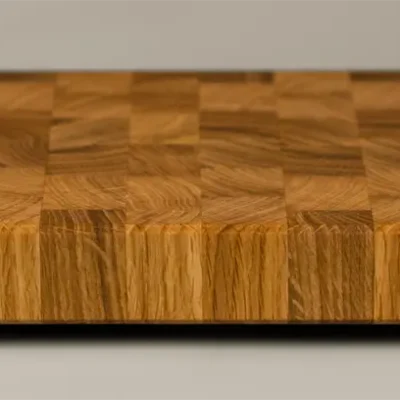
What are the best woods for cutting boards?
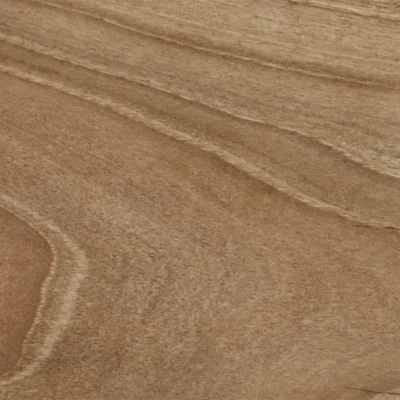
Walnut Wood: Uses and Characteristics
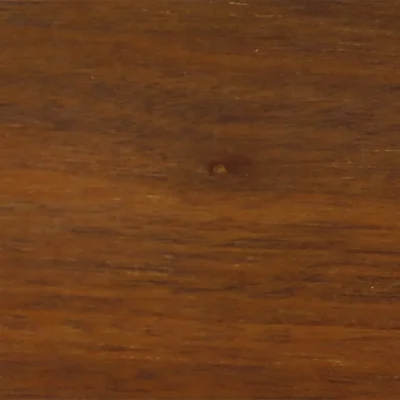
Outdoor wood: a complete guide
Nuestras tablas de cortar:
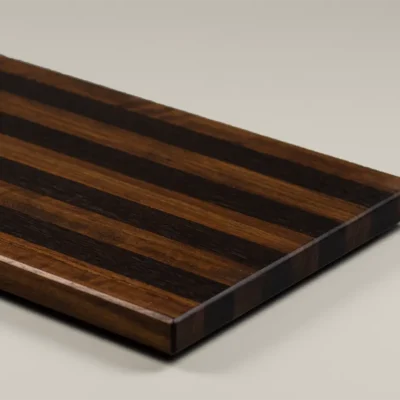
UMBRA
serving board
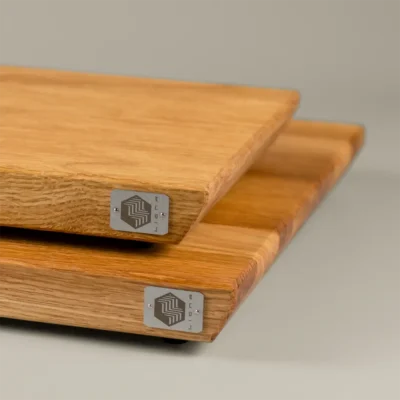
Linea
Oak oak cutting board
Linea
Oakoak cutting board
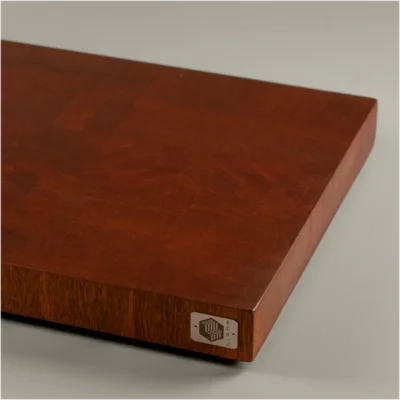
sapele end grain
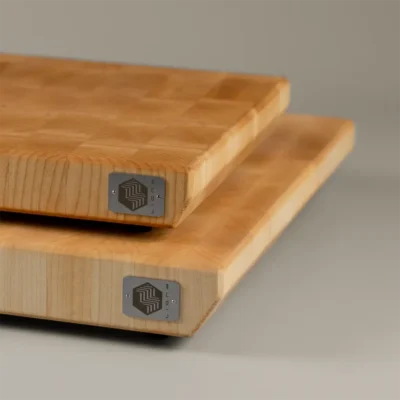
Pure
Maple maple butcher block
Pure
Maplemaple butcher block
